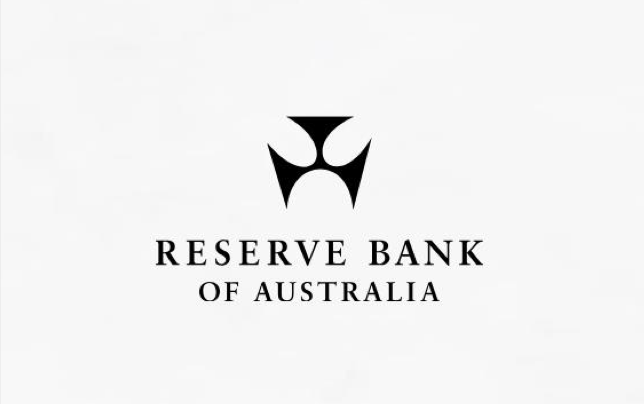
Robo-Advisors Risk Ruining Their Initial Appeal
By Mike Hogan for Barronsfs
There’s a surge in websites that want to design a stock portfolio for you. Some will even do it free. The trouble is that these robo-advisors are proliferating so fast and subdividing in so many ways that they risk making themselves irrelevant.
The original robo-advisors—the term became a buzzword after the Finovate Fall conference in 2014—were aimed at investors who wanted an inexpensive savings plan that offered a limited, straightforward menu of investment choices guided by algorithms that also helped with occasional rebalancing. Now, however, visitors to the more complex, math-heavy sites of MacroAxis, qplum, LifeStage Investing, and Ways2Wealth face many choices, some as fundamental as whether they want to put money aside for retirement or trade their way to savings.
All four start from a common place: They pay homage to modern portfolio theory, which has been the go-to retirement-planning approach for half a century. MPT stresses the trade-off between risk and reward in investing, creating optimal portfolios based on estimated long-term returns for a given amount of risk. But the last three sites, in particular, overlay different aspects of quantitative investing on MPT, with one going so far as to employ frequent trading. All are very technical, so let’s start with the most familiar approach.
MacroAxis, which has recently undergone a redesign, is the strictest adherent to MPT-style portfolio design. It looks good and is easy to navigate. Users are guided through design and optimization tasks via helpful guides offering plain-language descriptions.
These routines will fashion a brand-new portfolio for you or suggest changes to keep existing holdings tracking what MPT’s creator called the “efficient frontier” between risk and reward. Even the new, $8 monthly MacroAxis subscription lets a user build as many as four portfolios of 15 holdings each. It’s up to the subscriber to buy those tickers and then update them on the MacroAxis Website.
Beyond that, the site is chock full of formerly expensive optimization tools, like a colored heat map of asset correlations. Co-founder Vladimir Shpitalnik explains that his goal is to give subscribers the same tools used by professional financial advisors. Generous, but maybe a little too ambitious for investors with day jobs.
Some of these tools conflict with the “set-it-and-forget-it” school of portfolio design, which suggests that most investors are better off managing a handful of holdings whose share counts rarely get rebalanced. This philosophy is best illustrated by the “lazy portfolio” designs seen on the Bogleheads Website, where devotees of Vanguard Group founder John C. Bogle gather. Their free portfolio suggestions can include as few as two instruments—say, a diversified bond fund and a proxy for the S&P 500. More often, though, they recommend an allocation of six mutual and/or exchange-traded funds, each a proxy for a major asset class.
SIMPLICITY IS NOT THE APPROACH favored by many robo-advisors these days. Their portfolios are much more heavily populated, and, significantly, there is a trend toward frequent “tactical” rebalancings to respond to the market’s zigs and zags. The algorithmic optimization routines of the quants take that trend to its logical extreme.
Instead of a bundle of liquid index funds, qplum’s portfolio options start with a mix of trading strategies intended to reflect a user’s demographic profile and risk tolerance, as well as current market conditions. Those strategies get realized in a few dozen rather esoteric ETFs whose share counts can be adjusted intraday as relative risk among holdings ebbs and flows.
Access to the site’s model portfolios is free, and qplum will manage a portfolio of $10,000 or more for a maximum annual fee of 0.75% of assets. It trades on the subscriber’s behalf through an institutional broker, but has no access to subscriber funds.
It may be robo-advising, but a frequently turned portfolio employing strategies like risk-parity and trend following doesn’t seem the best place for retirement funds.
Another would-be robo advisor is LifeStage Investing. Its long-horizon, MPT-based portfolio designs are closer to MacroAxis than qplum, but there’s a lot of quant in its recipe. Based on a brief customer survey, LifeStage recommends one of four ETF-based portfolios named accumulation, consolidation, spending, and gifting. They’re meant to reflect most people’s stages of life. Pretty standard stuff for paid money managers, but LifeStage’s advice is free.
ETF recommendations are derived by a third party’s quant algorithm yielding expense ratios averaging 0.50% annually. However, an investor could find comparable funds for 0.10% or less.
But then, none of these Websites seems sensitive to fund charges or costs incurred by rebalancing, even though cost containment is considered a reliable and significant contributor to portfolio returns. All seem focused on the trade-off between risk and reward, including the last new entry, Ways2Wealth.
It charges nothing for its recommendations. The registrant need only answer a few standard questions, and the site pops out a recommended portfolio optimized using a combination of traditional MPT math and its own calculations. The only problem is that this Swiss company is constrained by European Union regulations that drastically skew its suggestions toward European ETFs. More than half of a recommended portfolio were European ETFs, another 40% U.S. funds. That is a backward allocation, not even appropriate for Europeans.
The site is easy to use and a great place to read up on MPT. But its recommendations need to be examined carefully. So do those of any advisor—human or robot.
Portfolio planning is not a job investors can just hand off to someone or something else. There are weaknesses in MPT, in quantitative investing, in every strategy—if only because they may not be well implemented. Investors need to know enough about this stuff to at least spot red flags.
And the best way to do that is to do it yourself. It’s not that hard to pick up a small collection of diversified asset proxies over time; the cheaper, the better. That usually means buying two to six of the largest index-oriented ETFs representing the S&P 500, bonds, real estate, and so on.
With hundreds of holdings, these popular funds are inherently diverse and liquid. They feature narrow bid-ask spreads, adhere closely to their benchmark indexes, and don’t turn over frequently, which, again, lowers costs. Profiles of them are all over free sites like Yahoo! Finance.
The odds of an investors’ success are improved when buying these ETFs only on severe pullbacks. They’ll all be bargains when the market next tanks (which is long overdue) because, during liquidity shortfalls, most assets correlate and dive for the bottom together. Save costs again by rebalancing only when adding new money.
It ain’t rocket science—or at least it doesn’t have to be.
First appeared at Barrons





